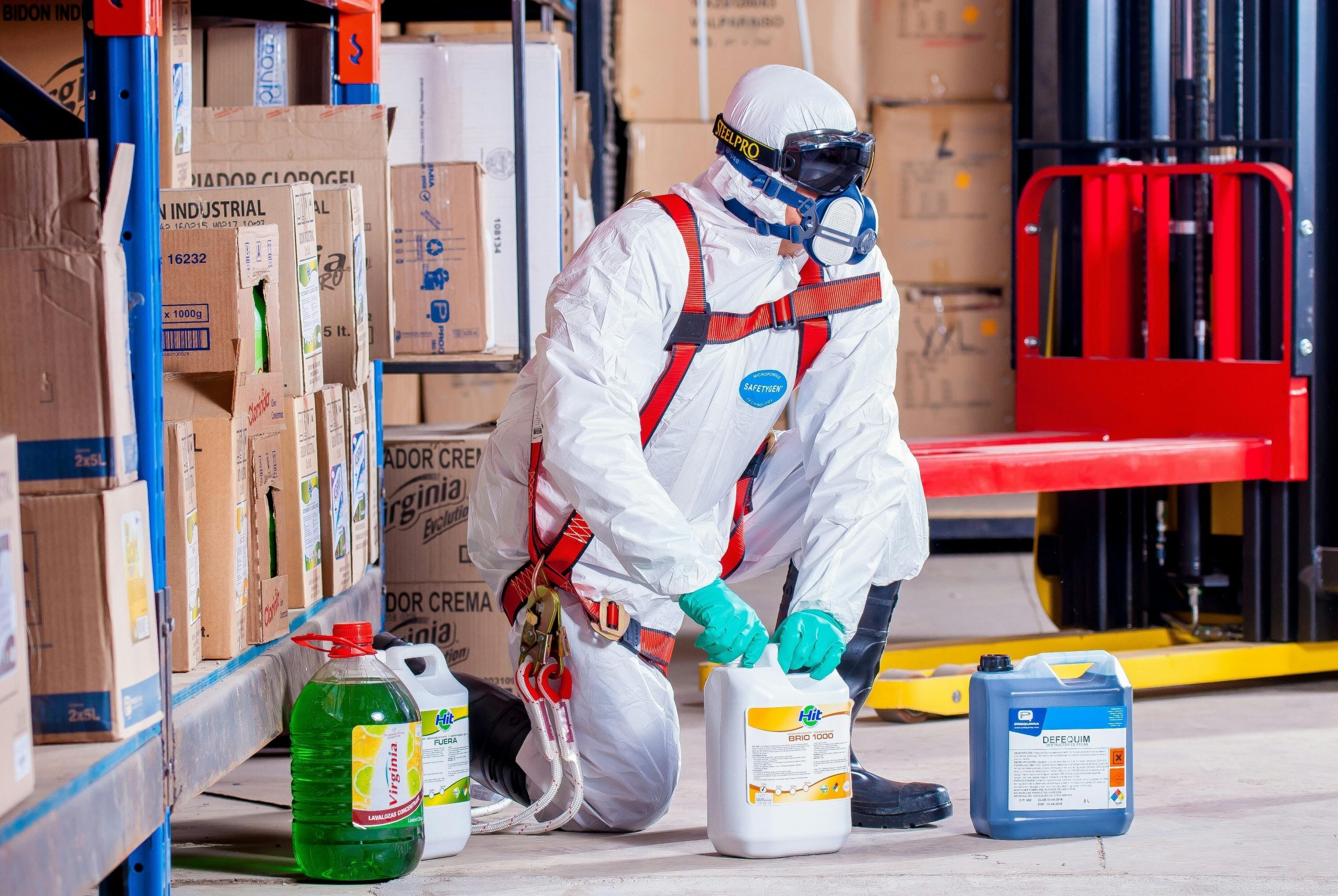This article is aimed at companies who carry out work or who are based within the Republic of Ireland, but it may also be beneficial to those who are considering taking work within the Republic of Ireland such as an electrical job. The aim of the article is to provide guidance on the Safety, Health and Welfare at Work Act 2005 (as amended), ((SHWW) Act), by addressing the duties of the employer and the employee under this legislation and the key elements of what employers should be concerned with.
To begin with, what is the SHWW Act? The SHWW Act is the primary piece of legislation in the Republic of Ireland to secure health and safety compliance which is supported by additional Acts and Regulations. The aim of the SHWW Act is to ensure that the safety, health and welfare of employees and others not in direct employment is protected so far as is reasonably practicable. The SHWW Act is enforced by the Health and Safety Authority Inspectors. The SHWW Act outlines responsibilities for the following:
- Employer’s
- Self-Employed.
- Persons in control of the place of work.
- Other various parties in relation to safety and health at work.
The SHWW Act also outlines the roles and functions of the Health and Safety Authority.
The SHWW Act comprises of the following:
- 89 Sections.
- 8 Parts.
- 7 Schedules.
We will discuss the responsibilities for the employer and the employee under the SHWW Act. Further guidance of the responsibilities can be found here http://www.irishstatutebook.ie/eli/2005/act/10/enacted/en/print#sec8. To start with, we will begin at Part 2, Chapter 1, Section 8: General Duties of Employer.
The first duty of the employer is to ensure that as so far as is reasonably practicable, the safety, health and welfare at work of their employees. Following on from this regulation, the employer’s duty extends further in particular to the following:
- To provide a safe place to work.
- To Manage and conduct work activities in such a way as to prevent, so far as is reasonably practicable, any improper conduct or behavior likely to put the safety, health or welfare at work of any employee at risk.
- With regards to the workplace, the employer must ensure as so far as is reasonably practicable that the design, provision and maintenance of the workplace is in a condition that is safe with, a safe means of access to and egress from it and that the plant, machinery or other articles are safe without risk to health.
- To ensure that as so far as is reasonably practicable, the safety and the prevention of risk to health at work of their employees relating to the use of any article or substance, or the exposure to noise, vibration or ionizing or other radiations or any other physical agent.
- To provide safe systems of work that are planned, organized, performed, maintained, and revised as appropriate.
- To provide and maintain welfare facilities for all employees at work or have arrangements in place for employees to have access to welfare facilities.
- To provide employees with the information, instruction, training, and supervision in a format that can be easily understood by the employees concerned.
- To implement the controls measures from both the risk assessment and the safety statement in order for the protection of the safety, health and welfare of the employees.
- To provide protective clothing and equipment where risks cannot be eliminated or adequately controlled.
- To prepare and review any emergency plans.
- To report any accidents and dangerous occurrences as prescribed to the Authority.
- Obtaining where necessary, the services of a competent person.
Finally, every employer shall ensure that any measure introduced for the safety, health and welfare does not come at a financial cost to the employee.
The duties above also extend to employees who are on a fixed-term contract and to those who are temporary.
The employer also has a duty to persons other than their employees against the risks arising from the workplace or work activity so far as is reasonably practicable.
As you can see from the duties, there is a repetitive phrase, ‘so far as is reasonably practicable’ but what does this phrase mean? To keep it simple, this is a balance of time, effort, and cost against the risk. To illustrate this, if the employer has exercised all their duty of care and to implement any further controls would be grossly disproportionate then the employer has done everything as so far as is reasonably practicable to ensure the work activity/workplace is safe without the risk to health.
Next, under Part 2, Section 9, employers have a duty to provide information to the employees. Employees should be informed of the hazards to their safety, health and welfare and the risks identified by the risk assessment. A simple way to provide this information to employees is by providing them with a copy of the risk assessment and Safety Statement which will also have the risk mitigation control measures identified enabling employees to carry out the work safely in line with the risk assessment.
In addition, training must be provided to employees on recruitment, on transfer of any task, following changes to a task, or upon the introduction of new equipment. Training should be delivered in a format that can be understood by all those concerned.
Part 3, Section 19 of the SHWW Act requires that every employer or those in control of work premises to carry out a written risk assessment. The risk assessment should identify the hazards within the workplace and the risks associated from that hazard. For each risk, the employer should assess and identify who is likely to be harmed and how, and then implement control measures for the protection of the safety, health and welfare. There are other statutory provisions that require a risk assessment to be carried out as part of the requirements under SHWW Act, for instance, Safety, Health and Welfare at Work (General Application) Regulations 2007 Chapter 3 of Part 2: Personal Protective Equipment.
Once the risk assessment has been completed it should be reviewed periodically. The SHWW Act does not stipulate how often the risk assessment should be reviewed however the SHWW Act does stipulate that it should be reviewed if there have been any significant changes to which it relates to or if there is another reason to believe that it is no longer valid. After any review, the risk assessment should be amended as appropriate and then resigned and dated. Alternatively, if there has been a change in the employee’s circumstances for example, an injury/allergic reaction then the risk assessments should be reviewed and whether the risk can be avoided or reduced by other measures such as substituting a substance or equipment for an alternative. It is always best practice to review risk assessments on an annual basis. The risk assessment must be included within the Safety Statement.
What do we mean by a Safety Statement? A Safety Statement is a key requirement under Part 3, Section 20 of the SHWW Act. The Safety Statement is of crucial importance for the management of safety, health and welfare at work and is based upon the risk assessment. The Safety Statement is a written document unless you have three or less employees then you must comply with a Code of Practice. The Health and Safety Authority have prepared several Code of Practice for different sectors. However, if you have more than three employees the Safety Statement must be documented and should include the following:
To keep the Safety Statement simple, it should be divided up into sections incorporating the below information.
- Section 1. Health and Safety Policy
- A signed declaration of how you will ensure that the workplace is safe and healthy.
- Section 2. Safety Arrangements and Information
- Names of those responsible for managing health and safety matters including their job titles.
- List of responsibilities for employers, management, and employees for managing and preventing risks arising from the work.
- Contractor’s responsibilities.
- Provision of welfare facilities.
- Commitment to employee consultation and participation.
- Plan and procedures for dealing with emergencies.
- Arrangements to ensure the safety of vulnerable persons including visitors to the workplace or anyone else affected by the work activities.
- Personal protective equipment policy.
- Arrangement on first aid and fire safety and the equipment and facilities available.
- Procedures for accident reporting and investigation.
- Section 3. Forms and Records – This list is not exhaustive.
- Training records.
- Personal protective equipment register.
- Emergency contact information.
- Accident investigation forms.
- Monitoring forms.
- Section 4. Risk Assessments and Actions to be Addressed.
The Safety Statement should be brought to the attention of all employees upon induction, on an annual basis and if there has been changes made to the document. The Safety Statement should be reviewed at least on an annual basis, or when there have been any changes or if you consider that it is no longer valid.
The employer should also request from contractor’s a copy of their Safety Statement before works commence.
So far, duties of the employer under the SHWW Act have been discussed now we will take a look at the employee’s duties, Chapter 2, Section 13. When at work employees must:
- Comply with all statutory provisions.
- Must not be intoxicated when at work. When reasonably required by the employer, submit to any appropriate, reasonable and proportionate tests for intoxicants or under the supervision of a registered medical practitioner who is a competent person.
- Follow all training and instruction provided by the employer.
- Use all equipment provided in the correct manner.
- Cooperate with their employer so that they can fully discharge their duties in accordance with SHWW Act and other relevant statutory provisions.
- Not engage in any improper conduct or dangerous behaviour.
- Attend such training and, as appropriate, undergo such assessment.
- Make correct use of any article or substance provided for use by the employer at work or for the protection including protective clothing or equipment.
- Report any concerns to their employer regarding the work carried out and any defects noted which might endanger themselves or others.
- Report any contravention of the relevant statutory provisions to their employer which could affect their safety, health and welfare or that of any other person.
- Report to their employer or their employer’s nominated registered practitioner if they become aware of any disease or physical or mental impairment which could give rise to risks to the safety, health and welfare of persons at work. Employees have a duty to protect themselves and others whilst at work.
All persons shall not intentionally or recklessly interfere with, misuse, or damage anything that has been provided for securing the safety, health and welfare at work. In addition, all persons shall not place at risk the safety, health and welfare of persons in connection with work activities.
As part of the SHWW Act, Part 4 employers and employees have the right to consult with one another on safety, health and welfare matters in relation to the workplace or the work activities.
Equally, employees are entitled to select a safety representative to represent them for any safety, health and welfare matter to the employer.
Up to this point, the article has discussed the employer’s and employee’s duties under the SHWW Act, now we will briefly discuss, the Health and Safety Authority. The Health and Safety Authority was originally set up by the Safety, Health and Welfare Act 1989 to enforce matters on safety, health and welfare.
To this present date, Health and Safety Inspectors will generally carry out a visit to a premise unannounced under the SHWW Act, in spite of this, some Inspectors may request an appointment first to ensure that they are meeting with the appropriate persons.
Guidance for what to expect when the Health and Safety Inspector calls can be found here: https://www.hsa.ie/eng/publications_and_forms/publications/corporate/when_the_inspector_calls_2019.pdf. Please note that one of the documents that the Inspector would like to see is your Safety Statement.
Lastly, the Health and Safety Inspectors have enforcement powers under the SHWW Act to take actions where breaches of statutory provisions have been identified. As an illustration, they can serve an Improvement Notice on an employer, they can serve a Prohibition Notice where the Inspector identifies an activity or piece of equipment which would give rise to serious personal injury.
The Inspector also could serve an Improvement Direction on the employer and the employer must respond with an Improvement Plan on how to mitigate the risks from harm in order to protect the safety, health and welfare to their employees and others.
The Republic of Ireland operates a common law system and will consider action based upon previous court decisions and precedent.
To summarise, this article has discussed the employer’s and employee’s duties and a brief overview of the Health and Safety Authority. For further details of duties for other duty holders, please follow this link to the SHWW Act https://www.hsa.ie/eng/Legislation/Acts/Safety_Health_and_Welfare_at_Work/SI_No_10_of_2005.pdf. For further guidance, please also follow the above link.






